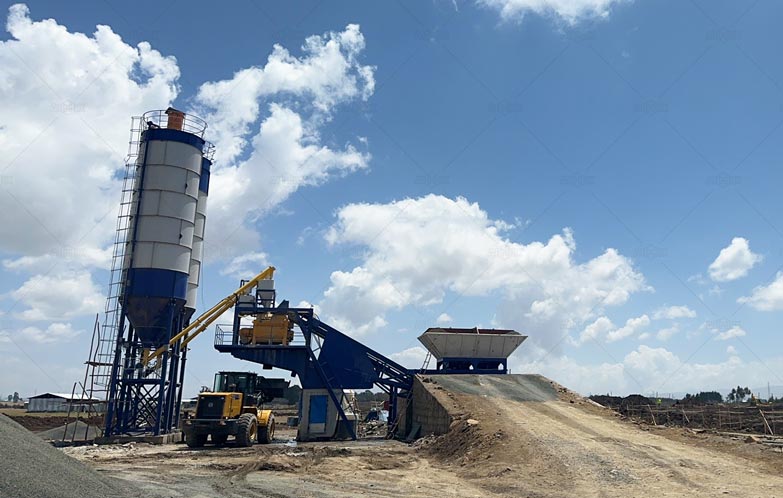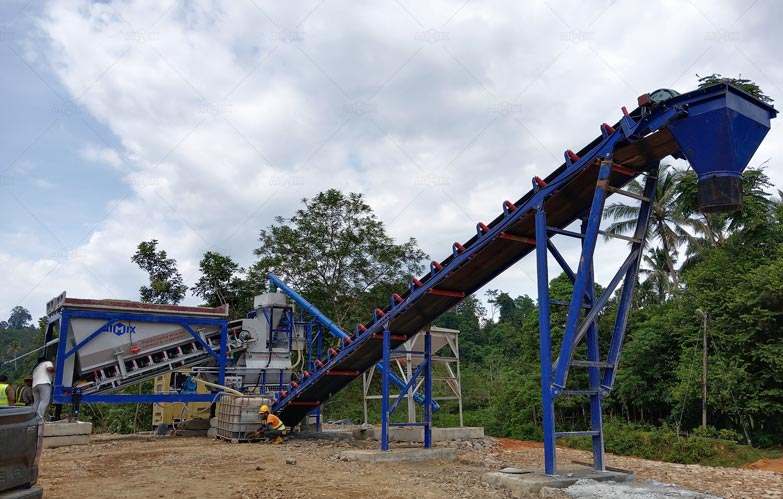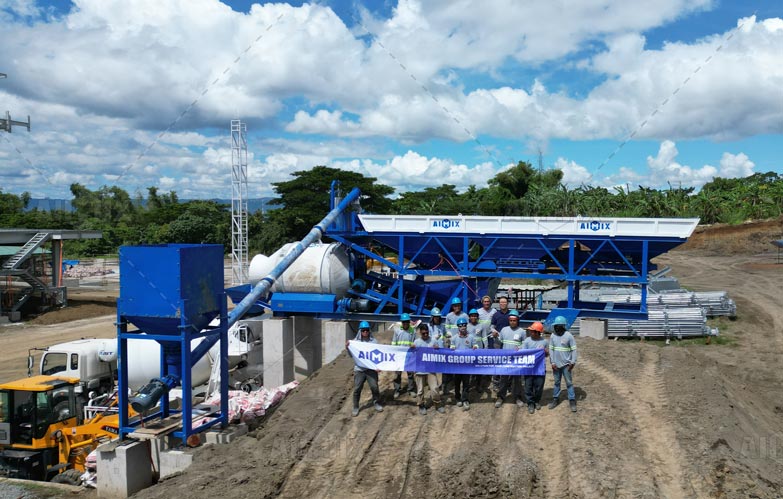
In the construction industry, time is often the single most important factor determining project success. In Peru, with its varied geography—from coastal plains to high Andean altiplanos and remote Amazonian corridors—the efficiency of a concrete plant Peru depends not only on production capacity but on the ability to deliver fresh concrete to the jobsite reliably and on time. Transportation modes and logistics planning directly affect concrete quality, project schedules, and overall cost. This article explores the principal transport options, the challenges they pose in Peruvian contexts, and practical strategies contractors can adopt when evaluating a concrete plant or considering a concrete plant for sale.
Peru’s topography and infrastructure present a mixture of logistical hurdles. Mountain passes, unpaved rural roads, limited bridges, seasonal river crossings, and heavy urban congestion in cities like Lima all influence how quickly concrete batches can reach the pour point. Weather impacts—such as intense rain seasons causing mud roads to become impassable—further complicate planning. For contractors and plant owners, these factors require careful alignment between plant location, transport assets, and delivery windows to avoid loss of workability and schedule slippage.
Mountainous routes increase travel time and fuel consumption while causing more vibration and wear on transit equipment. Long distances over poor-quality roads increase the risk of delayed deliveries and quality deterioration. These realities should shape decisions when selecting the site for a concrete plant Peru(planta de concreto peru) or when planning logistics for a new project.
In dense urban centers, narrow streets and traffic restrictions limit the size and speed of delivery vehicles. Time-of-day restrictions may apply for heavy vehicles, forcing deliveries into specific windows and requiring precise coordination between the plant and site teams.

Understanding the strengths and limitations of each transport mode helps managers select the optimal approach for a given project and site.
Truck mixers are the most common delivery method for ready-mixed concrete. Their rotating drums maintain workability during transit, and modern trucks often include admixture dosing to extend slump retention. In urban or short-distance contexts, these vehicles offer excellent flexibility and schedule control. However, on long, winding mountain routes or severely congested corridors, truck mixers face time penalties that can reduce effective working time on-site.
Pumping concrete off the truck directly into formwork accelerates placement and reduces manual handling. For tall structures or sites with difficult access, pumps reduce the dependency on short transit times. Yet the readiness of pumps and coordination with delivery trucks is critical: delays in truck arrivals can idle pumps and crews, increasing costs and impacting schedule flow. When combined with a well-located concrete plant(planta de hormigon), pumping greatly improves productivity and sequence reliability.
Although less common for transporting ready-mixed concrete, rail and water freight may deliver bulk cement and aggregates to a plant closer to the jobsite. Ensuring steady raw material supply via these modes can keep a plant producing continuously, which indirectly supports schedule adherence. In extremely remote zones, innovative options—such as river barges or temporary cable systems—may be the only viable method for material supply and should be factored into project timelines.

Even short delays in concrete delivery can cascade through the schedule, affecting curing, follow-on trades, and critical-path milestones. The following points illustrate where transportation directly intersects with schedule management.
Concrete has a finite workability period after mixing, and extended transit times increase the risk of reduced slump and inconsistent strength. Delays may force re-mixing, rejection of batches, or use of additional admixtures—each of which impacts cost and schedule. Locating a concrete plant Peru within an adequate radius, or deploying a temporary mobile plant, minimizes transit risk and protects schedule-critical pours.
Late arrivals of concrete create idle labor and equipment. Cranes, formwork crews, and finishing teams waiting for material inflate daily costs. When evaluating a concrete plant for sale(planta de hormigon en venta), factor in the expected fleet size, average delivery time, and contingency plans to avoid expensive downtime.
Delays in foundation and structural pours can postpone subsequent trades such as masonry, electrical, and finishing work. Schedule slips at one phase often propagate, extending total project duration. Reliable transport planning reduces these ripple effects.
Contractors and plant owners can adopt several practical measures to reduce transport-related schedule impacts.
Placing plants closer to the work front or deploying temporary mobile plants on or near site eliminates long transit times. Mobile or satellite plants are particularly valuable for remote infrastructure or linear projects like highways and pipelines.
Implement GPS tracking, route optimization, and live communication between truck drivers, plant dispatchers, and site supervisors. This visibility allows teams to adjust for traffic, coordinate pump readiness, and sequence pours to maximize productivity.
Build buffer times into schedules and maintain contingency supplies of admixtures to extend workability if needed. Use weather forecasting to plan deliveries and avoid pours during known heavy-rain windows that can block roads.

Transportation modes profoundly influence project schedules for concrete works in Peru. From truck mixers navigating mountain roads to pumping systems that speed placement, each choice brings trade-offs in time, cost, and quality. Contractors evaluating a concrete plant Peru or considering a concrete plant for sale must integrate logistics planning into the purchasing and operational strategy. By optimizing plant location, investing in fleet and tracking technologies, and employing flexible mobile solutions, teams can reduce delays, protect concrete quality, and keep projects on schedule even in the most challenging Peruvian environments.